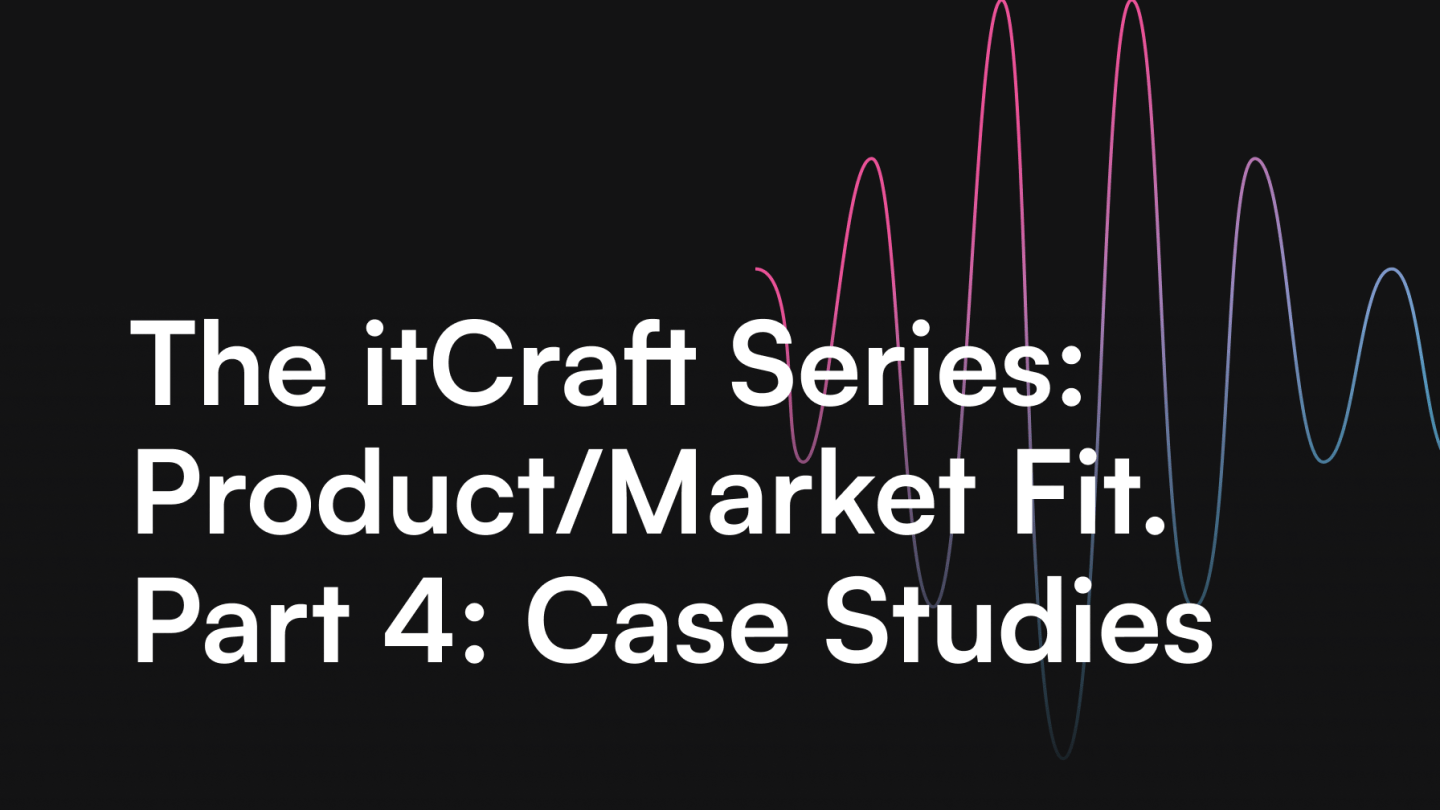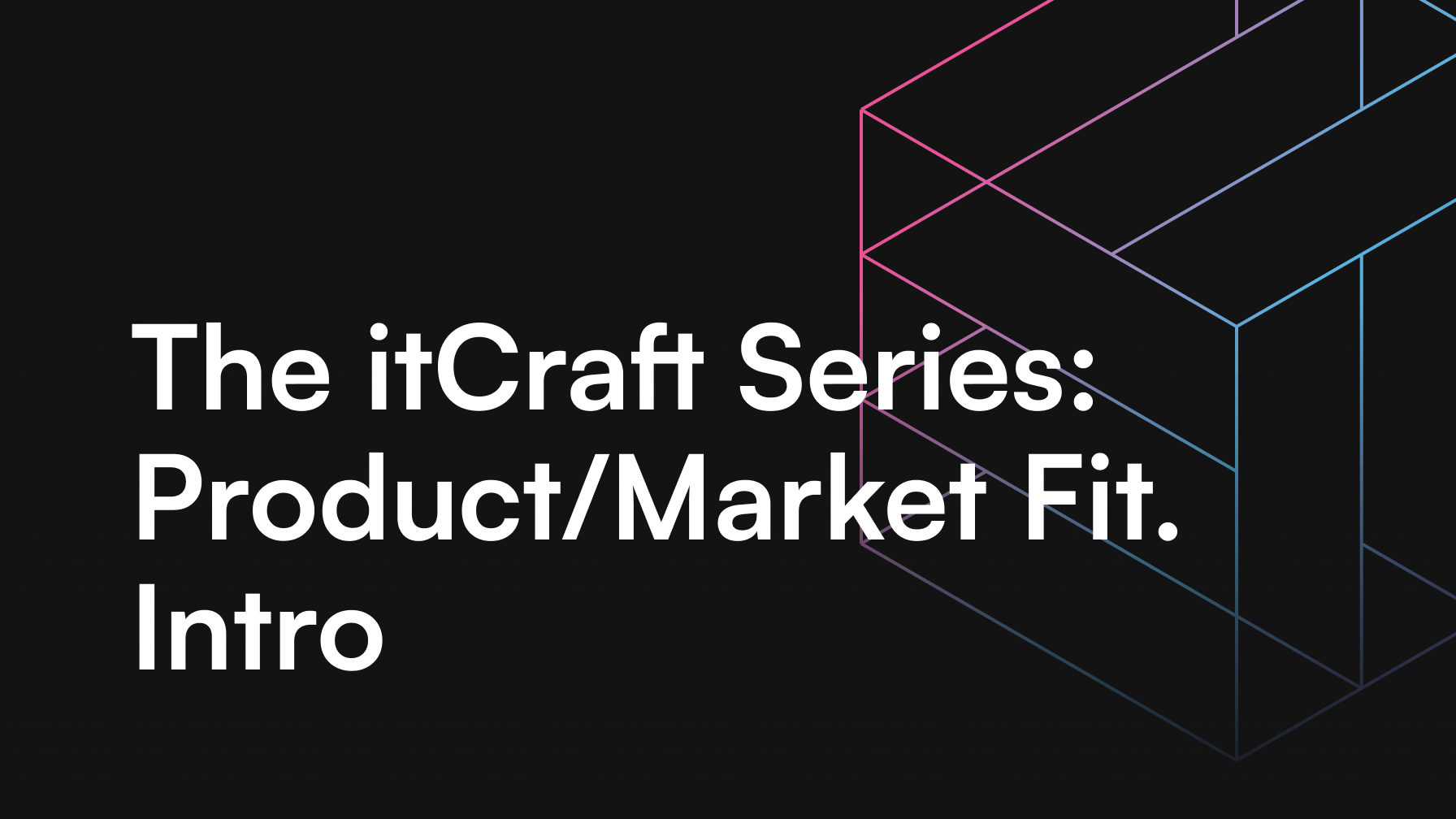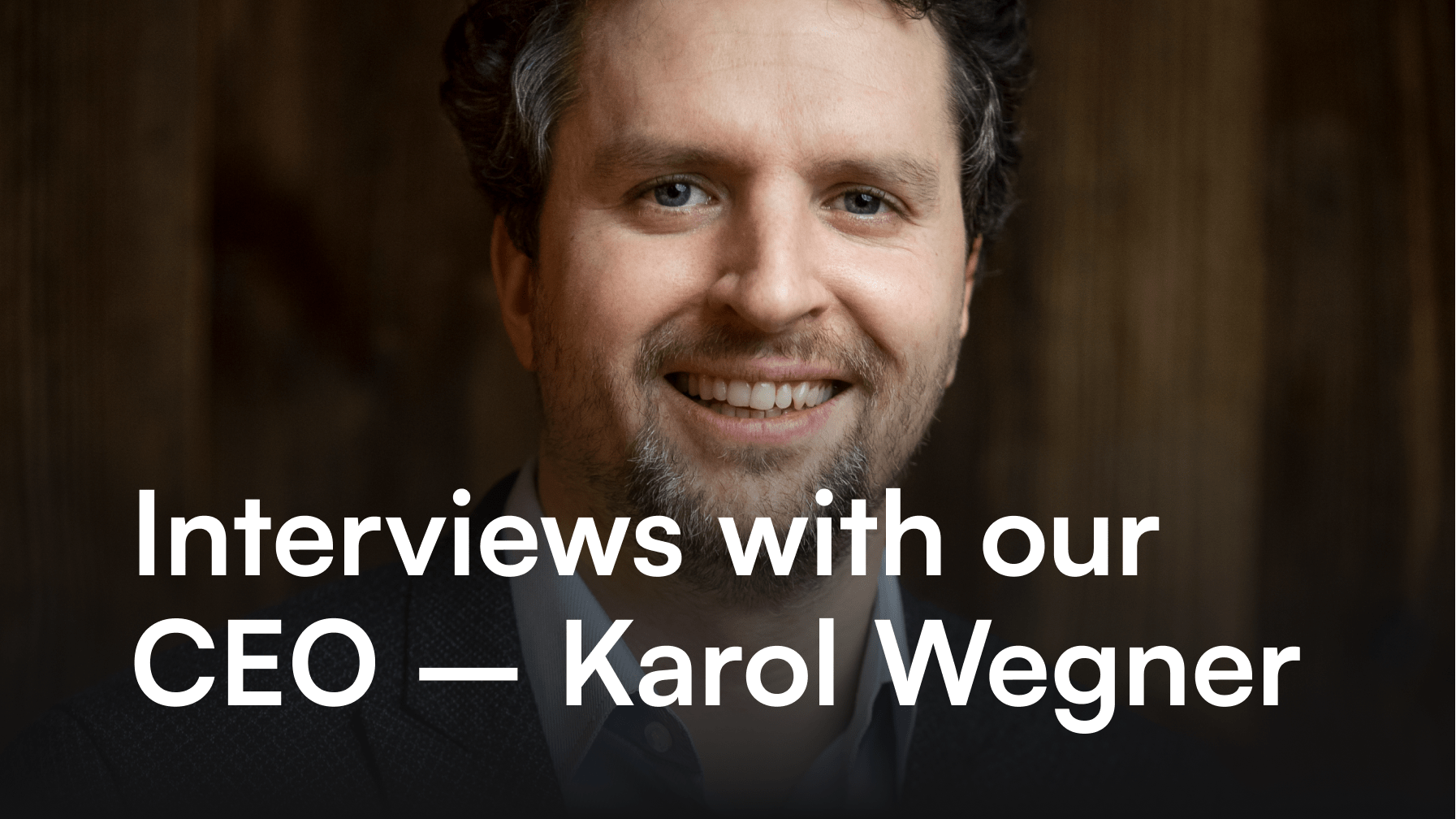The itCraft Series: Product/Market Fit. Part 4: Case Studies

Jakub Oleksy

Alexa Trachim

We’ve reached the final episode of our series about product/market fit. Throughout four previous articles, we’ve discussed research design, ways to define products, methodologies to find ideal markets and how to make both these elements work together. Now, it’s time to talk about examples. We will provide case studies from itCraft and also global companies that found their perfect product/market fit. We know that’s what you’ve been waiting for!
Who found product/market fit?
As you know from our previous blog posts, product/market fit means that your solution achieved success. It is sold to the right people. Their pains and problems are solved. Your company gains as much profit as possible. It’s a formula to business growth, and every enterprise wants to find it. That’s why we wanted to showcase real-life achievers who were not afraid to take a risk but also analyzed their ideas and calculated potential returns on their investments.
Check out these innovators and learn from their stories. We hope they will inspire you to look for opportunities and think outside the box.

Home Doctor
One of the companies we’ve been working with long-term. Their mobile app is dedicated to booking medical home visits and teleconsultations. Their first advantage was to operate in a niche that gained massive recognition in recent years. Telemedicine was already growing before the pandemic, but after COVID-19, it truly skyrocketed. Home Doctor found potential in a niche that wasn’t yet discovered and caught the wave when it started to speed up.
What’s interesting is that Home Doctor was open to changes, evolution and new approaches. They began as a mobile app dedicated to booking home visits. A B2C model was their goal at first, and they prepared a solution called “an Uber for doctors”. They already found a pain that their potential customers were struggling with and decided to design a resolution.
In 2 years, Home Doctor became a market leader in Poland, with 120 doctors on board. They were present in 7 major cities and had high ratings. It was time to develop the B2C solution further. They decided to introduce teleconsultations for even more convenience. However, that was not the only direction they chose to follow. Later on, Home Doctor pivoted their operations towards B2B and started collaborating with private health insurance providers. They listened to the market and looked for possibilities to expand. They didn’t forget about the B2C sector, though. Their next move is to sell prepaid vouchers for teleconsultations in convenience stores across the country.
Basically, Home Doctor is an example of a new company that did it right in the first place and then made bold decisions that promoted constant growth. They proved that product/market fit is not only about improving the original vision but also that sometimes it requires moving on and approaching completely new ideas.
Spotify
The music streaming platform we all know and love found a market gap that came into existence after Napster was banished due to copyright issues. Spotify’s forerunner was an excellent source of conclusions and lessons to learn. It confirmed that people wanted access to their favorite tunes without a need to buy CDs or other media.
So the company designed an app that revolutionized the way we listen to music on the internet. It came in a freemium model – you can listen to music for free but with ads or pay a small fee and enjoy all your playlists without any distractions. Spotify initially focused on legal aspects of the whole project. In the early 2000s, the users were used to listening to music online, usually from illegal sources. They decided to take a risk and take over this gray area.
In this story, product/market fit was actually already discovered. There was just one thing that needed to be fixed. That particular issue became Spotify’s ticket to becoming the leading global streaming platform with constantly growing revenue. People didn’t want to listen to their music illegally, they just didn’t have an alternative. The convenience and low price of Spotify’s service provoked a quick switch from downloading MP3 to streaming music without a need to break the law.
Spotify is expanding to this day, introducing new features, giving artists a chance to be discovered and giving users individual experiences by curating playlists and recommendations especially for them. With 365 million active listeners per month, they have a significant audience to test novelties with. That’s what product/market fit is all about – evaluating ideas and introducing the ones that meet users’ expectations.
Makro
Another client of ours. We’ve been working with Makro since 2016, and we are always proud to mention them, as the digital product we’ve created for them achieved huge success. The mobile app is used by 100K users monthly, and in 2019 it won a prize for the best B2B mobile application. If that doesn’t prove that Makro found their product/market fit, we don’t know what will.
As a globally recognized wholesaler, Makro wanted to build a stronger relationship with its customers. Giving users a mobile application is a great way to reach out to them and increase brand awareness. During our collaboration, Makro’s team was analyzing the needs and opinions of clients countless times to make sure we can provide features that they actually need. Then, they were consulting the results with us. Together, we’ve been designing solutions with the strongest value for Makro’s customers. The app’s goal was to display the most relevant data so the users wouldn’t have to contact customer support.
That’s what product/market fit is all about. Listening to the audience and giving them what they desire builds a strong foundation for every company that wants to become appreciated, but also invest in further development of their solution. Makro’s app started as a simple tool for managing a membership card that has to be scanned every time the client wants to enter the store. Then it was regularly adding new functionalities like store location, promos and special offers, a price scanner, an advanced product searching scanner, exclusive holiday programs for app users and more. Also, the app provides advanced data analysis that shows which screens and functionalities are used most often. This helps the Makro team to expand their product in the best possible way.
During numerous iterations, Makro decided that we should create an app that is highly scalable and elastic to adjust it to customers’ requirements. We considered industry trends, too. It became one of the essential components of their business. Product/market fit is always focused on the end-user. It motivates companies to not only think about profit but to actually put their clients first. It is not surprising that this approach has a positive influence on the revenue they make.
Slack
The instant messaging software used mainly by companies as a communication tool for their teams began as something else, which isn’t unusual for most new businesses in the last ten years. Slack was created to be a part of a role-playing game as an internal chat. However, the founders saw its potential in a different field. There were numerous RPGs out there, but no enterprise-dedicated communicator with so many features and a fun approach.
Slack owners didn’t lose the creativity of game developers when they decided to evolve their product into a business tool. For example, they implemented a Slack bot, a somewhat NPC-like character that helps the user learn how the app works and supports their daily activities. Also, team members can use emojis (and custom ones, too) and GIFs to introduce some joy into their work tasks.
What was unique about Slack’s approach was constant communication with the users and how they collected feedback. From day one, the CEO was active on Twitter to listen to people’s concerns and find out what is actually appreciated. Two years after release, in 2015, the Slack team also surveyed more than 700 Slackers to determine what they thought about the product. 51% responded that they would be very disappointed if Slack disappeared from the market, and 82% recommended Slack to other people.
The product/market fit game is strong when it comes to Slack. It did not only change its business model and took a risk to explore a niche that wasn’t yet conquered. Their goal was to fulfill users’ desires and communicate openly about their solution. This way, they became an unquestionable leader when it comes to business communication and also true innovation.
Because, to quote Slack’s CEO, Stewart Butterfield:
The best – maybe the only? – real, direct measure of “innovation” is change in human behaviour. In fact, it is useful to take this way of thinking as definitional: innovation is the sum of change across the whole system, not a thing which causes a change in how people behave. No small innovation ever caused a large shift in how people spend their time and no large one has ever failed to do so.
To sum it up
If you read all of our product/market fit articles, you will see how these companies are perfect examples to conclude our series. They made bold decisions, were not afraid to talk to their audience, and if they saw an opportunity, they changed directions and faced new challenges. Some ideas were discovered due to coincidences, and others were the result of planning, strategizing and analyzing. The result was always the same, though. Recognition among customers, increased profit and success within a chosen niche.
Now it’s your turn to find the perfect product/market fit and become a new sensation. We can help you with that. Since 2010, we’ve been supporting businesses in building innovative digital solutions from scratch. Whether you are a newcomer or run an established enterprise that wants to prepare a new product, we offer you a complete package of services. From product discovery to design, development, testing and maintenance, you can count on us every step of the way. The product/market fit approach is what we always have in mind when working with our clients.
Contact us and let us know what you have in mind. We will help you create a product, find an ideal market, and fit these two together to elevate your business. You can count on us every step of the way. Let’s build a spectacular digital solution together!





